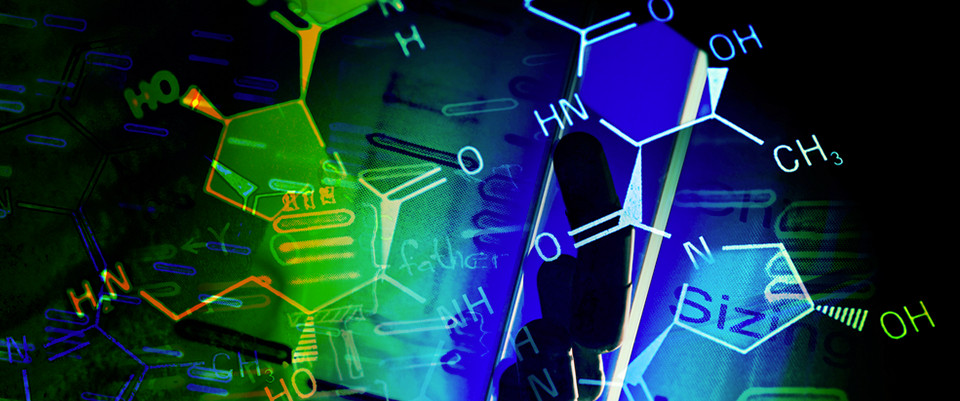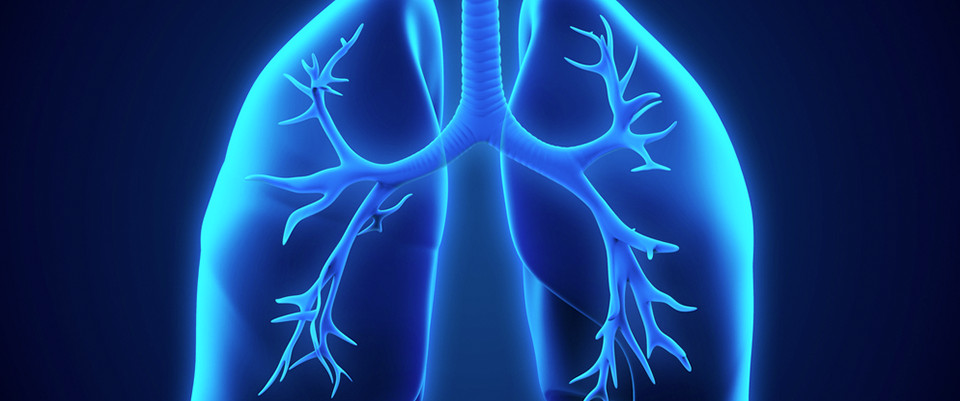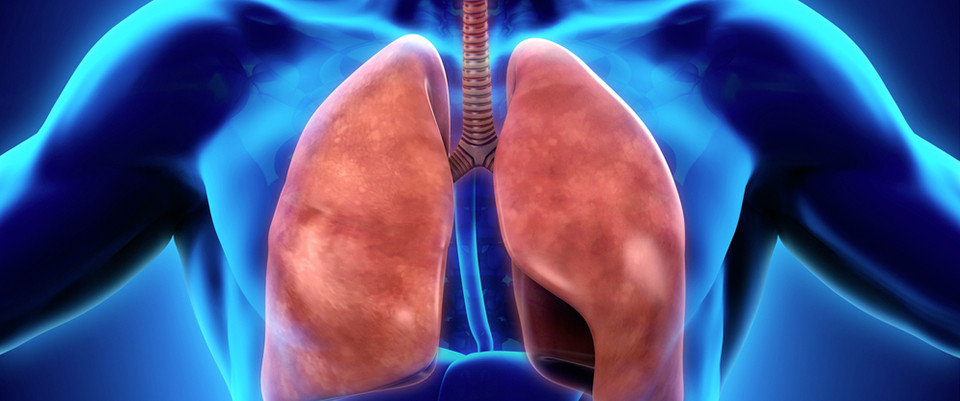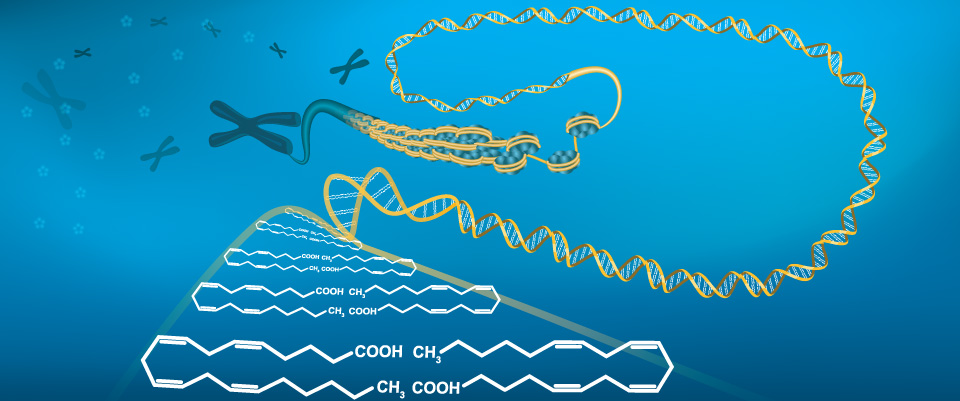PubMed
The next step in Mendelian randomization
Elife. 2023 Mar 9;12:e86416. doi: 10.7554/eLife.86416.ABSTRACTExpanding a statistical approach called Mendelian randomization to include multiple variables may help researchers to identify new molecular causes of specific traits.PMID:36891986 | DOI:10.7554/eLife.86416
Exploiting the mediating role of the metabolome to unravel transcript-to-phenotype associations
Elife. 2023 Mar 9;12:e81097. doi: 10.7554/eLife.81097.ABSTRACTDespite the success of genome-wide association studies (GWASs) in identifying genetic variants associated with complex traits, understanding the mechanisms behind these statistical associations remains challenging. Several methods that integrate methylation, gene expression, and protein quantitative trait loci (QTLs) with GWAS data to determine their causal role in the path from genotype to phenotype have been proposed. Here, we developed and applied a multi-omics Mendelian randomization (MR) framework to study how metabolites mediate the effect of gene expression on complex traits. We identified 216 transcript-metabolite-trait causal triplets involving 26 medically relevant phenotypes. Among these associations, 58% were missed by classical transcriptome-wide MR, which only uses gene expression and GWAS data. This allowed the identification of biologically relevant pathways, such as between ANKH and calcium levels mediated by citrate levels and SLC6A12 and serum creatinine through modulation of the levels of the renal osmolyte betaine. We show that the signals missed by transcriptome-wide MR are found, thanks to the increase in power conferred by integrating multiple omics layer. Simulation analyses show that with larger molecular QTL studies and in case of mediated effects, our multi-omics MR framework outperforms classical MR approaches designed to detect causal relationships between single molecular traits and complex phenotypes.PMID:36891970 | DOI:10.7554/eLife.81097
Salt Tolerant Gene 1 contributes to salt tolerance by maintaining photosystem II activity in maize
Plant Cell Environ. 2023 Mar 9. doi: 10.1111/pce.14578. Online ahead of print.ABSTRACTSalt stress is a major environmental factor limiting crop growth and productivity. Here, we show that Salt-Tolerant Gene 1 (ZmSTG1) contributes to salt tolerance by maintaining photosystem activity in maize. ZmSTG1 encodes an endoplasmic reticulum localized protein and retrotransposon insertion in the promoter region causes differential expression levels in maize inbred lines. Overexpression of ZmSTG1 improved plant growth vigor, and knockout of ZmSTG1 weakened plant growth under normal and salt stress conditions. Transcriptome and metabolome analyses indicated that ZmSTG1 might regulate the expression of lipid trafficking-related genes dependent on the ABA signalling pathway, thereby increasing the galactolipids and phospholipid concentrations in the photosynthetic membrane under salt stress. Chlorophyll fluorescence parameters showed that the knockout of ZmSTG1 led to significant impairment of plant photosystem II (PSII) activity under normal and salt stress conditions, whereas overexpression of ZmSTG1 dramatically improved plant PSII activity under salt stress conditions. We also demonstrated that the application of the salt-tolerant locus could enhance salt tolerance in hybrid maize plants. Taken together, we propose that ZmSTG1 may modulate the lipid composition in the photosynthetic membrane by affecting the expression of lipid trafficking-related genes to maintain the photosynthetic activity of plants under salt stress. This article is protected by copyright. All rights reserved.PMID:36891878 | DOI:10.1111/pce.14578
ETHYLENE-INSENSITIVE 3-LIKE 2 regulates β-carotene and ascorbic acid accumulation in tomatoes during ripening
Plant Physiol. 2023 Mar 9:kiad151. doi: 10.1093/plphys/kiad151. Online ahead of print.ABSTRACTETHYLENE-INSENSITIVE 3/ETHYLENE-INSENSITIVE 3-LIKEs (EIN3/EILs) are important ethylene response factors during fruit ripening. Here, we discovered that EIL2 controls carotenoid metabolism and ascorbic acid (AsA) biosynthesis in tomato (Solanum lycopersicum). In contrast to the red fruits presented in the wild type (WT) 45 days after pollination, the fruits of CRISPR/Cas9 eil2 mutants and SlEIL2 RNAi lines (ERIs) showed yellow or orange fruits. Correlation analysis of transcriptome and metabolome data for the ERI and WT ripe fruits revealed that SlEIL2 is involved in β-carotene and AsA accumulation. ETHYLENE RESPONSE FACTORs (ERFs) are the typical components downstream from EIN3 in the ethylene response pathway. Through a comprehensive screening of ERF family members, we determined that SlEIL2 directly regulates the expression of four SlERFs. Two of these, SlERF.H30 and SlERF.G6, encode proteins that participate in the regulation of LYCOPENE-β-CYCLASE 2 (SlLCYB2), encoding an enzyme that mediates the conversion of lycopene to carotene in fruits. In addition, SlEIL2 transcriptionally repressed L-GALACTOSE 1-PHOSPHATE PHOSPHATASE 3 (SlGPP3) and MYO-INOSITOL OXYGENASE 1 (SlMIOX1) expression, which resulted in 1.62 fold increase of AsA via both the L-galactose and myoinositol pathways. Overall, we demonstrated that SlEIL2 functions in controlling β-carotene and AsA levels, providing a potential strategy for genetic engineering to improve the nutritional value and quality of tomato fruit.PMID:36891812 | DOI:10.1093/plphys/kiad151
Maternal antibiotic treatment during pregnancy attenuates the transport and absorption of maternal antibody IgG through TLR4 and TLR2 receptor
Front Microbiol. 2023 Feb 17;14:1109273. doi: 10.3389/fmicb.2023.1109273. eCollection 2023.ABSTRACTMaternal antibody IgG, the main antibody in colostrum, plays an important role in neonates protection. Commensal microbiota is closely related to host antibody repertoire. However, there are few reports on how maternal gut microbiota affects maternal antibody IgG transfer. In the present study, we investigated the effects of altering the gut microbiota (treated with antibiotics during pregnancy) on maternal IgG transportation and offspring absorption and explored its underlying mechanisms. Results showed that antibiotic treatment during pregnancy significantly decreased maternal cecal microbial richness (Chao1 and Obesrved species) and diversity (Shannon and Simpson). Plasma metabolome enriched significant changes in the process of bile acid secretion pathway, and the concentration of deoxycholic acid, a secondary metabolite of microorganisms was lowered. Flow cytometry analysis indicated that antibiotic treatment promoted the number of B cells and abated the number of T, DC and M1 cells in intestinal lamina propria of dams. Surprisingly, the serum IgG level in antibiotic treated dams was significantly increased, while IgG contents in colostrum was decreased. Moreover, pregnancy antibiotic treatment in dams was reduced the expression of FcRn, TLR4 and TLR2 in breast of dams and in duodenum and jejunum of neonates. Furthermore, TLR4-/- and TLR2-/- knock-out mice showed a lower FcRn expression in breast of dams and in duodenum and jejunum of neonates. These findings suggest that maternal intestine bacteria may affect the maternal IgG transfer through regulating the breast TLR4 and TLR2 of dams.PMID:36891396 | PMC:PMC9986424 | DOI:10.3389/fmicb.2023.1109273
Antibiofilm activity and NMR-based metabolomic characterization of cell-free supernatant of <em>Limosilactobacillus reuteri</em> DSM 17938
Front Microbiol. 2023 Feb 20;14:1128275. doi: 10.3389/fmicb.2023.1128275. eCollection 2023.ABSTRACTThe microbial biofilm has been defined as a "key virulence factor" for a multitude of microorganisms associated with chronic infections. Its multifactorial nature and variability, as well as an increase in antimicrobial resistance, suggest the need to identify new compounds as alternatives to the commonly used antimicrobials. The aim of this study was to assess the antibiofilm activity of cell-free supernatant (CFS) and its sub-fractions (SurE 10 K with a molecular weight <10 kDa and SurE with a molecular weight <30 kDa), produced by Limosilactobacillus reuteri DSM 17938, vs. biofilm-producing bacterial species. The minimum inhibitory biofilm concentration (MBIC) and the minimum biofilm eradication concentration (MBEC) were determined via three different methods and an NMR metabolomic analysis of CFS and SurE 10K was performed to identify and quantify several compounds. Finally, the storage stability of these postbiotics was evaluated by a colorimetric assay by analyzing changes in the CIEL*a*b parameters. The CFS showed a promising antibiofilm activity against the biofilm developed by clinically relevant microorganisms. The NMR of CFS and SurE 10K identifies and quantifies several compounds, mainly organic acids and amino acids, with lactate being the most abundant metabolite in all the analyzed samples. The CFS and SurE 10 K were characterized by a similar qualitative profile, with the exception of formate and glycine detected only in the CFS. Finally, the CIEL*a*b parameters assess the better conditions to analyze and use these matrices for the correct preservation of bioactive compounds.PMID:36891385 | PMC:PMC9986594 | DOI:10.3389/fmicb.2023.1128275
A putative terpene cyclase gene (<em>CcPtc1</em>) is required for fungal development and virulence in <em>Cytospora chrysosperma</em>
Front Microbiol. 2023 Feb 20;14:1084828. doi: 10.3389/fmicb.2023.1084828. eCollection 2023.ABSTRACTCytospora chrysosperma is a destructive plant pathogenic fungus, which causes canker disease on numerous woody plants. However, knowledge concerning the interaction between C. chrysosperma and its host remains limited. Secondary metabolites produced by phytopathogens often play important roles in their virulence. Terpene cyclases (TC), polyketide synthases (PKS) and non-ribosomal peptide synthetases (NRPS) are the key components for the synthesis of secondary metabolites. Here, we characterized the functions of a putative terpene type secondary metabolite biosynthetic core gene CcPtc1 in C. chrysosperma, which was significantly up-regulated in the early stages of infection. Importantly, deletion of CcPtc1 greatly reduced fungal virulence to the poplar twigs and they also showed significantly reduced fungal growth and conidiation compared with the wild-type (WT) strain. Furthermore, toxicity test of the crude extraction from each strain showed that the toxicity of crude extraction secreted by ΔCcPtc1 were strongly compromised in comparison with the WT strain. Subsequently, the untargeted metabolomics analyses between ΔCcPtc1 mutant and WT strain were conducted, which revealed 193 significantly different abundant metabolites (DAMs) inΔCcPtc1 mutant compared to the WT strain, including 90 significantly downregulated metabolites and 103 significantly up-regulated metabolites, respectively. Among them, four key metabolic pathways that reported to be important for fungal virulence were enriched, including pantothenate and coenzyme A (CoA) biosynthesis. Moreover, we also detected significant alterations in a series of terpenoids, among which (+)-ar-turmerone, pulegone, ethyl chrysanthemumate, and genipin were significantly down-regulated, while cuminaldehyde and (±)-abscisic acid were significantly up-regulated. In conclusion, our results demonstrated that CcPtc1 acts as a virulence-related secondary metabolism factor and provides new insights into the pathogenesis of C. chrysosperma.PMID:36891381 | PMC:PMC9986285 | DOI:10.3389/fmicb.2023.1084828
Biomarker discovery for tuberculosis using metabolomics
Front Mol Biosci. 2023 Feb 20;10:1099654. doi: 10.3389/fmolb.2023.1099654. eCollection 2023.ABSTRACTTuberculosis (TB) is the leading cause of death among infectious diseases, and the ratio of cases in which its pathogen Mycobacterium tuberculosis (Mtb) is drug resistant has been increasing worldwide, whereas latent tuberculosis infection (LTBI) may develop into active TB. Thus it is important to understand the mechanism of drug resistance, find new drugs, and find biomarkers for TB diagnosis. The rapid progress of metabolomics has enabled quantitative metabolite profiling of both the host and the pathogen. In this context, we provide recent progress in the application of metabolomics toward biomarker discovery for tuberculosis. In particular, we first focus on biomarkers based on blood or other body fluids for diagnosing active TB, identifying LTBI and predicting the risk of developing active TB, as well as monitoring the effectiveness of anti-TB drugs. Then we discuss the pathogen-based biomarker research for identifying drug resistant TB. While there have been many reports of potential candidate biomarkers, validations and clinical testing as well as improved bioinformatics analysis are needed to further substantiate and select key biomarkers before they can be made clinically applicable.PMID:36891238 | PMC:PMC9986447 | DOI:10.3389/fmolb.2023.1099654
Metabolome combined with gut microbiome revealed the lipid-lowering mechanism of Xuezhiping capsule on hyperlipidemic hamster induced by high fat diet
Front Mol Biosci. 2023 Feb 20;10:1147910. doi: 10.3389/fmolb.2023.1147910. eCollection 2023.ABSTRACTIntroduction: Hyperlipidemia is a common metabolic disorder with presence of excess fat or lipids in the blood, may induce liver injury, oxidative stress and inflammatory. Xuezhiping capsule (XZP) is a famous Chinese patent medicine clinically used for anti-hyperlipidemia. However, the regulation mechanism of XZP on hyperlipidemia has not been elucidated so far. Methods: This study aimed to explore the effects of XZP on hypolipidemic, antioxidant and anti-inflammatory effects, and the potential mechanism by a combination of untargeted metabolomics and 16S rRNA sequencing. Results: The results indicated that XZP reduced the level of total cholesterol (TC), triglyceride (TG), low density lipoprotein cholesterol (LDL-C), increased the level of high density liptein cholesterol (HDL-C), alleviated excessive accumulation of lipid droplets in liver. Biochemical indexes of liver function including gamma glutamyl transferase (GGT) and glutamic oxaloacetic transaminase (GOT) in liver were remarkably decreased. Meanwhile, XZP increased the level of oxidative stress biochemical indexes including superoxide dismutase (SOD) and glutathione (GSH). In addition, XZP increased the level of peroxisome proliferators-activated receptors α (PPARα), acetyl CoA carboxylase 1 (ACOX1) and cholesterol 7-alpha hydroxylase (CYP7A1) in liver, and improved lipid metabolism in serum, liver and fecal lipid metabolism. XZP increased diversity index and the ratio of Firmicutes and Bacteroidetes, regulated seventeen genera, and illustrated strong correlations with liver lipid metabolism and phenotypic indicators. Discussion: These findings suggest that XZP reduced blood lipid and liver lipid, protected liver function, anti inflammation and anti-oxidation, ameliorate lipid metabolic disorders by modulating alpha linolenic acid and linoleic acid metabolism, bile acid metabolism, arachidonic acid metabolism, and regulated gut microbiota composition of high-fat diet (HFD) hamsters.PMID:36891237 | PMC:PMC9986548 | DOI:10.3389/fmolb.2023.1147910
UPLC-MS based integrated plasma proteomic and metabolomic profiling of TSC-RAML and its relationship with everolimus treatment
Front Mol Biosci. 2023 Feb 20;10:1000248. doi: 10.3389/fmolb.2023.1000248. eCollection 2023.ABSTRACTAim: To profile the plasma proteomics and metabolomics of patients with renal cysts, sporadic angiomyolipoma (S-AML) and tuberous sclerosis complex related angiomyolipoma (TSC-RAML) before and after everolimus treatment, and to find potential diagnostic and prognostic biomarkers as well as reveal the underlying mechanism of TSC tumorigenesis. Materials and Methods: We retrospectively measured the plasma proteins and metabolites from November 2016 to November 2017 in a cohort of pre-treatment and post-treatment TSC-RAML patients and compared them with renal cyst and S-AML patients by ultra-performance liquid chromatography-mass spectrometer (UPLC-MS). The tumor reduction rates of TSC-RAML were assessed and correlated with the plasma protein and metabolite levels. In addition, functional analysis based on differentially expressed molecules was performed to reveal the underlying mechanisms. Results: Eighty-five patients with one hundred and ten plasma samples were enrolled in our study. Multiple proteins and metabolites, such as pre-melanosome protein (PMEL) and S-adenosylmethionine (SAM), demonstrated both diagnostic and prognostic effects. Functional analysis revealed many dysregulated pathways, including angiogenesis synthesis, smooth muscle proliferation and migration, amino acid metabolism and glycerophospholipid metabolism. Conclusion: The plasma proteomics and metabolomics pattern of TSC-RAML was clearly different from that of other renal tumors, and the differentially expressed plasma molecules could be used as prognostic and diagnostic biomarkers. The dysregulated pathways, such as angiogenesis and amino acid metabolism, may shed new light on the treatment of TSC-RAML.PMID:36891236 | PMC:PMC9986496 | DOI:10.3389/fmolb.2023.1000248
The metabolome of human milk is altered differentially by Holder pasteurization and high hydrostatic pressure processing
Front Nutr. 2023 Feb 20;10:1107054. doi: 10.3389/fnut.2023.1107054. eCollection 2023.ABSTRACTThe milk metabolome is composed of hundreds of molecules that can impact infant development. In preterm infants, sterilized donor milk (DM) is frequently used for their feeding. We aimed to identify differences in the metabolome of DM after two types of milk sterilization: the Holder pasteurization (HoP) and a high hydrostatic pressure (HP) processing. DM samples were sterilized by HoP (62.5°C for 30 min) or processed by HP (350 MPa at 38°C). 595 milk metabolites were analyzed using an untargeted metabolomic analysis. Both treatments differentially altered several classes of compounds. The major changes noted included decreased levels of free fatty acids, phospholipid metabolites, and sphingomyelins. Decreases were more strongly noted in HP samples rather than in HoP ones. Both HoP and HP treatments increased the levels of ceramides and nucleotide compounds. The sterilization of human milk altered its metabolome especially for lipids.PMID:36891163 | PMC:PMC9987212 | DOI:10.3389/fnut.2023.1107054
Pathogen-triggered metabolic adjustments to potato virus Y infection in potato
Front Plant Sci. 2023 Feb 20;13:1031629. doi: 10.3389/fpls.2022.1031629. eCollection 2022.ABSTRACTPotato (Solanum tuberosum L) is affected by several viral pathogens with the most economically damaging being potato virus Y (PVY). At least nine biologically distinct variants of PVY are known to attack potato, with necrotic types named PVYNTN and PVYN-Wi being the most recent additions to the list. So far, the molecular plant-virus interactions underlying this pathogenicity are not fully understood. In this study, gas chromatography coupled with mass spectroscopy (GC-MS) was used for an untargeted investigation of the changes in leaf metabolomes of PVY-resistant cultivar Premier Russet, and a susceptible cultivar, Russet Burbank, following inoculation with three PVY strains, PVYNTN, PVYN-Wi, and PVYO. Analysis of the resulting GC-MS spectra with the online software Metaboanalyst (version 5.0) uncovered several common and strain-specific metabolites that are induced by PVY inoculation. In Premier Russet, the major overlap in differential accumulation was found between PVYN-Wi and PVYO. However, the 14 significant pathways occurred solely due to PVYN-Wi. In contrast, the main overlap in differential metabolite profiles and pathways in Russet Burbank was between PVYNTN and PVYO. Overall, limited overlap was observed between PVYNTN and PVYN-Wi. As a result, PVYN-Wi-induced necrosis may be mechanistically distinguishable from that of PVYNTN. Furthermore, 10 common and seven cultivar-specific metabolites as potential indicators of PVY infection and susceptibility/resistance were identified by using PLS-DA and ANOVA. In Russet Burbank, glucose-6-phosphate and fructose-6-phosphate were particularly affected by strain-time interaction. This highlights the relevance of the regulation of carbohydrate metabolism for defense against PVY. Some strain- and cultivar-dependent metabolite changes were also observed, reflecting the known genetic resistance-susceptibility dichotomy between the two cultivars. Consequently, engineering broad-spectrum resistance may be the most effective breeding strategy for managing these necrotic strains of PVY.PMID:36891131 | PMC:PMC9986423 | DOI:10.3389/fpls.2022.1031629
Integrated transcriptomics and metabolomics analysis provide insight into anthocyanin biosynthesis for sepal color formation in <em>Heptacodium miconioides</em>
Front Plant Sci. 2023 Feb 20;14:1044581. doi: 10.3389/fpls.2023.1044581. eCollection 2023.ABSTRACTHeptacodium miconioides Rehd., commonly known as "seven-son flower," is an ornamental species with a beautiful flower pattern and persistent sepals. Its sepals are of horticultural value, turning bright red and elongating in the autumn; however, the molecular mechanisms that cause sepal color change remain unclear. We analyzed the dynamic changes in anthocyanin composition in the sepal of H. miconioides at four developmental stages (S1-S4). A total of 41 anthocyanins were detected and classified into 7 major anthocyanin aglycones. High levels of the pigments cyanidin-3,5-O-diglucoside, cyanidin-3-O-galactoside, cyanidin-3-O-glucoside, and pelargonidin-3-O-glucoside were responsible for sepal reddening. Transcriptome analysis revealed 15 differentially expressed genes involved in anthocyanin biosynthesis that were detected between 2 developmental stages. Of these, the high expression of HmANS was considered critical structural gene related to anthocyanin biosynthesis pathway in the sepal through co-expression analysis with anthocyanin content. In addition, a transcription factor (TF)-metabolite correlation analysis revealed that three HmMYB, two HmbHLH, two HmWRKY, and two HmNAC TFs exhibited a strong positive role in the regulation of the anthocyanin structural genes (Pearson's correlation coefficient > 0.90). Luciferase activity assay showed that HmMYB114, HmbHLH130, HmWRKY6, and HmNAC1 could activate the promoters of HmCHS4 and HmDFR1 genes in vitro. These findings increase our understanding of anthocyanin metabolism in the sepal of H. miconioides and provide a guide for studies involving sepal color conversion and regulation.PMID:36890897 | PMC:PMC9987713 | DOI:10.3389/fpls.2023.1044581
The gut microbiota metabolite capsiate regulate SLC2A1 expression by targeting HIF-1α to inhibit knee osteoarthritis-induced ferroptosis
Aging Cell. 2023 Mar 8:e13807. doi: 10.1111/acel.13807. Online ahead of print.ABSTRACTFerroptosis is an iron-dependent cell death that has been found to aggravate the progression of osteoarthritis (OA) and gut microbiota- OA axis refers to the bidirectional information network between the gut microbiota and OA, which may provide a new way to protect the OA. However, the role of gut microbiota-derived metabolites in ferroptosis-relative osteoarthritis remains unclear. The objective of this study was to analyze the protective effect of gut microbiota and its metabolite capsiate (CAT) on ferroptosis-relative osteoarthritis in vivo and in vitro experiments. From June 2021 to February 2022, 78 patients were evaluated retrospectively and divided into two groups: The health group (n = 39) and the OA group (n = 40). Iron and oxidative stress indicators were determined in peripheral blood samples. And then in vivo and in vitro experiments, a surgically destabilized medial meniscus (DMM) mice model was established and treated with CAT or Ferric Inhibitor-1 (Fer-1). Solute Carrier Family 2 Member 1 (SLC2A1) short hairpin RNA (shRNA) was utilized to inhibit SLC2A1 expression. Serum iron was increased significantly but total iron binding capacity was decreased significantly in OA patients than healthy people (p < 0.0001). The least absolute shrinkage and selection operator clinical prediction model suggested that serum iron, total iron binding capacity, transferrin, and superoxide dismutase were all independent predictors of OA (p < 0.001). Bioinformatics results suggested that SLC2A1, Metastasis-Associated Lung Adenocarcinoma Transcript 1 (MALAT1), and HIF-1α (Hypoxia Inducible Factor 1 Alpha)-related oxidative stress signaling pathways play an important role in iron homeostasis and OA. In addition, gut microbiota 16s RNA sequencing and untargeted metabolomics were used to find that gut microbiota metabolites CAT in mice with osteoarthritis were negatively correlated with Osteoarthritis Research Society International (OARSI) scores for chondrogenic degeneration (p = 0.0017). Moreover, CAT reduced ferroptosis-dependent osteoarthritis in vivo and in vitro. However, the protective effect of CAT against ferroptosis-dependent osteoarthritis could be eliminated by silencing SLC2A1. SLC2A1 was upregulated but reduced the SLC2A1 and HIF-1α levels in the DMM group. HIF-1α, MALAT1, and apoptosis levels were increased after SLC2A1 knockout in chondrocyte cells (p = 0.0017). Finally, downregulation of SLC2A1 expression by Adeno-associated Virus (AAV) -SLC2A1 shRNA improves osteoarthritis in vivo. Our findings indicated that CAT inhibited HIF-1a expression and reduced ferroptosis-relative osteoarthritis progression by activating SLC2A1.PMID:36890785 | DOI:10.1111/acel.13807
Antimicrobial peptides act on the rumen microbiome and metabolome affecting the performance of castrated bulls
J Anim Sci Biotechnol. 2023 Mar 9;14(1):31. doi: 10.1186/s40104-023-00832-5.ABSTRACTBACKGROUND: Many countries have already banned the use of antibiotics in animal husbandry, making it extremely difficult to maintain animal health in livestock breeding. In the livestock industry, there is an urgent need to develop alternatives to antibiotics which will not lead to drug resistance on prolonged use. In this study, eighteen castrated bulls were randomly divided into two groups. The control group (CK) was fed the basal diet, while the antimicrobial peptide group (AP) was fed the basal diet supplemented with 8 g of antimicrobial peptides in the basal diet for the experimental period of 270 d. They were then slaughtered to measure production performance, and the ruminal contents were isolated for metagenomic and metabolome sequencing analysis.RESULT: The results showed that antimicrobial peptides could improve the daily weight, carcass weight, and net meat weight of the experimental animals. Additionally, the rumen papillae diameter and the micropapillary density in the AP were significantly greater than those in the CK. Furthermore, the determination of digestive enzymes and fermentation parameters showed that the contents of protease, xylanase, and β-glucoside in the AP were greater than those in the CK. However, lipase content in the CK was greater than that in the AP. Moreover, the content of acetate, propionate, butyrate, and valerate was found to be greater in AP than those in CK. The metagenomic analysis annotated 1993 differential microorganisms at the species level. The KEGG enrichment of these microorganisms revealed that the enrichment of drug resistance-related pathways was dramatically decreased in the AP, whereas the enrichment of immune-related pathways was significantly increased. There was also a significant reduction in the types of viruses in the AP. 187 probiotics with significant differences were found, 135 of which were higher in AP than in CK. It was also found that the antimicrobial mechanism of the antimicrobial peptides was quite specific. Seven low-abundance microorganisms (Acinetobacter_sp._Ac_1271, Aequorivita soesokkakensis, Bacillus lacisalsi, Haloferax larsenii, Lysinibacillus_sp._3DF0063, Parabacteroides_sp._2_1_7, Streptomyces_sp._So13.3) were found to regulate growth performance of the bull negatively. Metabolome analysis identified 45 differentially differential metabolites that significantly different between the CK and the AP groups. Seven upregulated metabolites (4-pyridoxic acid, Ala-Phe, 3-ureidopropionate, hippuric acid, terephthalic acid, L-alanine, uridine 5-monophosphate) improve the growth performance of the experimental animals. To detect the interactions between the rumen microbiome and metabolism, we associated the rumen microbiome with the metabolome and found that negative regulation between the above 7 microorganisms and 7 metabolites.CONCLUSIONS: This study shows that antimicrobial peptides can improve the growth performance of animals while resisting viruses and harmful bacteria and are expected to become healthy alternatives to antibiotics. We demonstrated a new antimicrobial peptides pharmacological model. We demonstrated low-abundance microorganisms may play a role by regulating the content of metabolites.PMID:36890581 | DOI:10.1186/s40104-023-00832-5
Cannabinoids modulate the microbiota-gut-brain axis in HIV/SIV infection by reducing neuroinflammation and dysbiosis while concurrently elevating endocannabinoid and indole-3-propionate levels
J Neuroinflammation. 2023 Mar 8;20(1):62. doi: 10.1186/s12974-023-02729-6.ABSTRACTBACKGROUND: Although the advent of combination anti-retroviral therapy (cART) has transformed HIV into a manageable chronic disease, an estimated 30-50% of people living with HIV (PLWH) exhibit cognitive and motor deficits collectively known as HIV-associated neurocognitive disorders (HAND). A key driver of HAND neuropathology is chronic neuroinflammation, where proinflammatory mediators produced by activated microglia and macrophages are thought to inflict neuronal injury and loss. Moreover, the dysregulation of the microbiota-gut-brain axis (MGBA) in PLWH, consequent to gastrointestinal dysfunction and dysbiosis, can lead to neuroinflammation and persistent cognitive impairment, which underscores the need for new interventions.METHODS: We performed RNA-seq and microRNA profiling in basal ganglia (BG), metabolomics (plasma) and shotgun metagenomic sequencing (colon contents) in uninfected and SIV-infected rhesus macaques (RMs) administered vehicle (VEH/SIV) or delta-9-tetrahydrocannabinol (THC) (THC/SIV).RESULTS: Long-term, low-dose THC reduced neuroinflammation and dysbiosis and significantly increased plasma endocannabinoid, endocannabinoid-like, glycerophospholipid and indole-3-propionate levels in chronically SIV-infected RMs. Chronic THC potently blocked the upregulation of genes associated with type-I interferon responses (NLRC5, CCL2, CXCL10, IRF1, IRF7, STAT2, BST2), excitotoxicity (SLC7A11), and enhanced protein expression of WFS1 (endoplasmic reticulum stress) and CRYM (oxidative stress) in BG. Additionally, THC successfully countered miR-142-3p-mediated suppression of WFS1 protein expression via a cannabinoid receptor-1-mediated mechanism in HCN2 neuronal cells. Most importantly, THC significantly increased the relative abundance of Firmicutes and Clostridia including indole-3-propionate (C. botulinum, C. paraputrificum, and C. cadaveris) and butyrate (C. butyricum, Faecalibacterium prausnitzii and Butyricicoccus pullicaecorum) producers in colonic contents.CONCLUSION: This study demonstrates the potential of long-term, low-dose THC to positively modulate the MGBA by reducing neuroinflammation, enhancing endocannabinoid levels and promoting the growth of gut bacterial species that produce neuroprotective metabolites, like indole-3-propionate. The findings from this study may benefit not only PLWH on cART, but also those with no access to cART and more importantly, those who fail to suppress the virus under cART.PMID:36890518 | DOI:10.1186/s12974-023-02729-6
Caffeine ameliorates the metabolic syndrome in diet-induced obese mice through regulating the gut microbiota and serum metabolism
Diabetol Metab Syndr. 2023 Mar 8;15(1):37. doi: 10.1186/s13098-023-00993-3.ABSTRACTOBJECTIVE: Obesity is associated with gut microbiota disorders, which has been related to developing metabolic syndromes. The research aims to investigate the effects of caffeine treatment on insulin resistance, intestinal microbiota composition and serum metabolomic changes in high-fat diet (HFD)-induced obesity mice.METHODS: Eight-week-old male C57BL/6 J mice were fed a normal chow diet (NCD) or HFD with or without different concentrations of caffeine. After 12 weeks of treatment, body weight, insulin resistance, serum lipid profiles, gut microbiota and serum metabolomic profiles were assessed.RESULTS: Caffeine intervention improved the metabolic syndrome in HFD-fed mice, such as serum lipid disorders and insulin resistance. 16S rRNA Sequencing analysis revealed that caffeine increased the relative abundance of Dubosiella, Bifidobacterium and Desulfovibrio and decreased that of Bacteroides, Lactobacillus and Lactococcus to reverse HFD-fed obesity in mice. Additionally, Caffeine Supplementation also altered serum metabolomics, mainly focusing on lipid metabolism, bile acid metabolism and energy metabolism. Caffeine increased its metabolite 1,7-Dimethylxanthine, which was positively correlated with Dubosiella.CONCLUSIONS: Caffeine exerts a beneficial effect on insulin resistance in HFD-mice, and the underlying mechanism may be partly related to altered gut microbiota and bile acid metabolism.PMID:36890514 | DOI:10.1186/s13098-023-00993-3
Metabolic reprogramming by Acly inhibition using SB-204990 alters glucoregulation and modulates molecular mechanisms associated with aging
Commun Biol. 2023 Mar 8;6(1):250. doi: 10.1038/s42003-023-04625-4.ABSTRACTATP-citrate lyase is a central integrator of cellular metabolism in the interface of protein, carbohydrate, and lipid metabolism. The physiological consequences as well as the molecular mechanisms orchestrating the response to long-term pharmacologically induced Acly inhibition are unknown. We report here that the Acly inhibitor SB-204990 improves metabolic health and physical strength in wild-type mice when fed with a high-fat diet, while in mice fed with healthy diet results in metabolic imbalance and moderated insulin resistance. By applying a multiomic approach using untargeted metabolomics, transcriptomics, and proteomics, we determined that, in vivo, SB-204990 plays a role in the regulation of molecular mechanisms associated with aging, such as energy metabolism, mitochondrial function, mTOR signaling, and folate cycle, while global alterations on histone acetylation are absent. Our findings indicate a mechanism for regulating molecular pathways of aging that prevents the development of metabolic abnormalities associated with unhealthy dieting. This strategy might be explored for devising therapeutic approaches to prevent metabolic diseases.PMID:36890357 | DOI:10.1038/s42003-023-04625-4
Towards a Rosetta stone for metabolomics: recommendations to overcome inconsistent metabolite nomenclature
Nat Metab. 2023 Mar 8. doi: 10.1038/s42255-023-00757-3. Online ahead of print.NO ABSTRACTPMID:36890347 | DOI:10.1038/s42255-023-00757-3
Structural basis for bacterial energy extraction from atmospheric hydrogen
Nature. 2023 Mar 8. doi: 10.1038/s41586-023-05781-7. Online ahead of print.ABSTRACTDiverse aerobic bacteria use atmospheric H2 as an energy source for growth and survival1. This globally significant process regulates the composition of the atmosphere, enhances soil biodiversity and drives primary production in extreme environments2,3. Atmospheric H2 oxidation is attributed to uncharacterized members of the [NiFe] hydrogenase superfamily4,5. However, it remains unresolved how these enzymes overcome the extraordinary catalytic challenge of oxidizing picomolar levels of H2 amid ambient levels of the catalytic poison O2 and how the derived electrons are transferred to the respiratory chain1. Here we determined the cryo-electron microscopy structure of the Mycobacterium smegmatis hydrogenase Huc and investigated its mechanism. Huc is a highly efficient oxygen-insensitive enzyme that couples oxidation of atmospheric H2 to the hydrogenation of the respiratory electron carrier menaquinone. Huc uses narrow hydrophobic gas channels to selectively bind atmospheric H2 at the expense of O2, and 3 [3Fe-4S] clusters modulate the properties of the enzyme so that atmospheric H2 oxidation is energetically feasible. The Huc catalytic subunits form an octameric 833 kDa complex around a membrane-associated stalk, which transports and reduces menaquinone 94 Å from the membrane. These findings provide a mechanistic basis for the biogeochemically and ecologically important process of atmospheric H2 oxidation, uncover a mode of energy coupling dependent on long-range quinone transport, and pave the way for the development of catalysts that oxidize H2 in ambient air.PMID:36890228 | DOI:10.1038/s41586-023-05781-7











